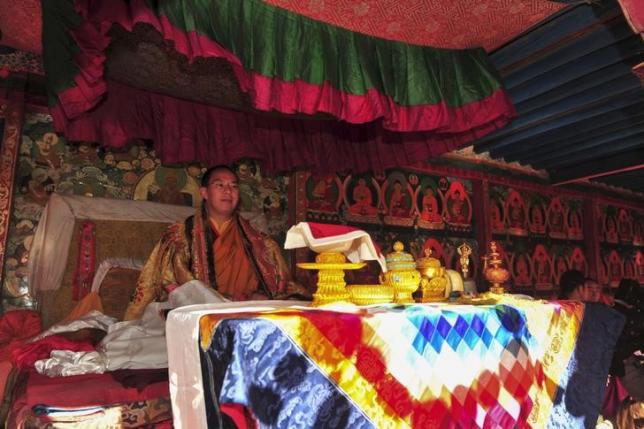As political appointments set the stage for one leadership transition in China, authorities are maneuvering for another, positioning their chosen Panchen Lama to assume a more prominent role after the death of the exiled Tibetan leader, the Dalai Lama. In 1995, Beijing installed Gyalsten Norbu as the 11th Panchen Lama—the second highest ranking cleric in the Gelug sect of Tibetan Buddhism after the Dalai Lama—after rejecting the incarnation the exiled Dalai Lama had helped recognize from exile. Gendun Choekyi Nyima, the Dalai Lama-sanctioned choice, subsequently disappeared, and has yet to be seen publicly—much to the concern of many Tibetans and human rights advocates. Chinese officials have attempted in recent years to assure the world that the long unseen Panchen Lama, now 27, is “living a normal life and does not wish to be disturbed,” but concerns linger.
In July at the Tashi Lhunpo Monastery in Shigatse, Gyaltsen Norbu oversaw a four-day Kalachakra initiation, a tantric ritual that hadn’t been held in Tibet since the Dalai Lama’s exile, and state media reported that an estimated 50,000 Buddhists would “attend the auspicious event.” Local Tibetans, many of whom don’t recognize Beiijing’s choice of the Panchen Lama, were reportedly forced to attend the ritual by authorities. State media has continued to more prominently feature the controversial Panchen Lama’s increasing activities, and to note that he is “expected to mitigate the Dalai [Lama]’s influence.” At The Washington Post, Simon Denyer reports on signs that Party authorities may be grooming their controversial Panchen Lama to fill the traditional political role of the Dalai Lama after the current exiled high lama dies:
Gyaltsen Norbu was born in Tibet in 1990 to parents who were Communist Party members. He has lived in Beijing, reportedly under “protective” guard, since being enthroned in 1995 as the Panchen Lama.
He has always stressed his loyalty to the Chinese state, declaring last year that “the lives of the masses are moving toward wealth and civilization” and that “the Tibetan future is bright like the endless light of the golden sun.”
[…] The International Campaign for Tibet, a Washington-based advocacy group for Tibetan democracy and human rights, said those comments may have reflected concerns relayed to him by senior lamas during his visits to monasteries in Tibet.
Tsering Shakya, a Tibetan historian and scholar at the University of British Columbia, said the fact that the Panchen Lama does not live in his traditional seat in Tibet’s Tashi Lhunpo Monastery shows that monks there still do not accept him. [Source]
In 2014, after the Dalai Lama praised Xi Jinping for being “open-minded” and hinted that informal discussions could soon allow him a pilgrimage to China, Beijing reasserted it’s anti-Dalai Lama stance, and promised to “severely punish” any Party members in the Tibetan Autonomous Region who support him. Since then, the 81-year-old Dalai Lama has repeatedly suggested that he could be the last incarnation in a centuries old political and spiritual tradition. Beijing has countered by asserting its right to name his successor.
Beijing’s intervention in Tibetan Buddhist affairs—a prerogative it claims to have inherited from its imperial predecessors—reflects an assertive attitude that critics say has fostered mounting tensions with ethnic and religious minorities, particularly in Tibet and Xinjiang. For more on the topic, see a recent China Policy Institute post by professor James Liebold asking “is China a ticking time bomb of ethnic contradictions.” See also a recent report from The Economist on how Beijing’s policies are contributing to changes in Tibetan culture, or earlier CDT coverage of Tibetan culture facing pressure from state policy, urbanization, and Tibetan nationalism.








